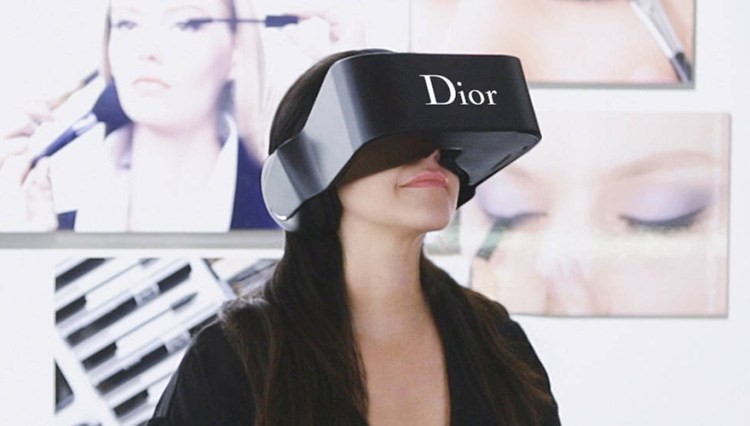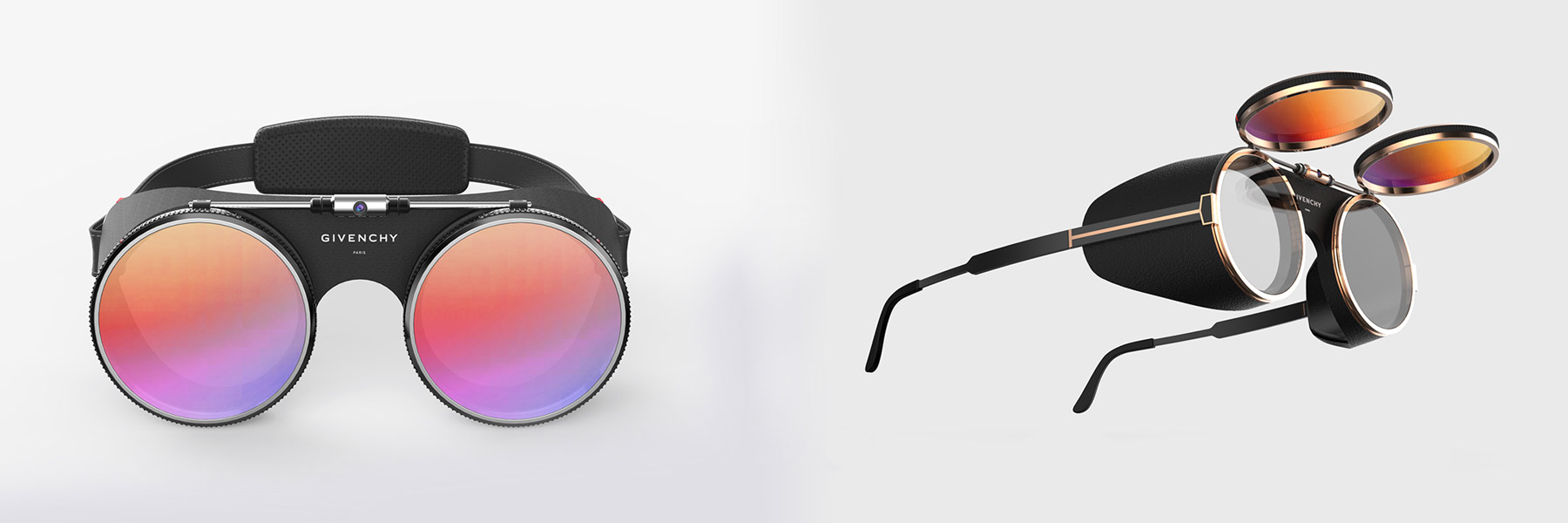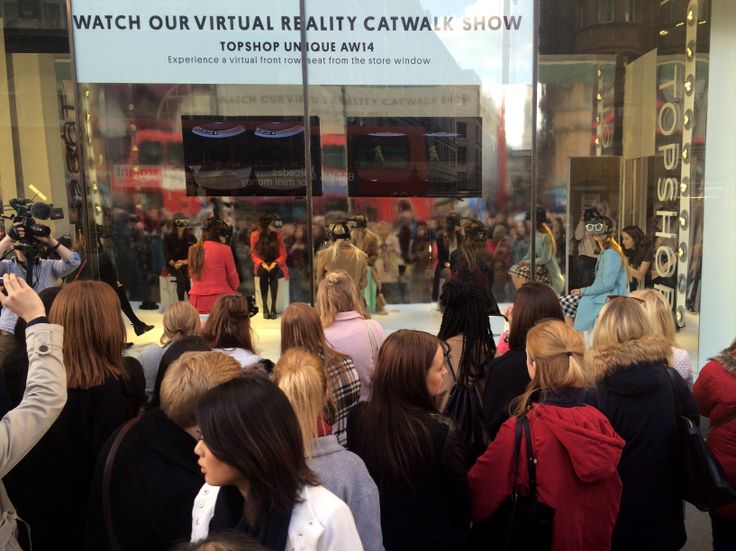Fashion is in the midst of an evolution, pioneering new design and experience on the frontier of virtual and augmented realities. But unlike Aldous Huxley’s bleak dystopia, this brave new world has all the promise of a Saks Fifth Avenue Window.

Over the holidays, I experienced my first VR immersion. That is to say, I wore a helmet that bore a striking resemblance to a storm trooper, whilst riding a virtual cage into the deep blue. There I got to observe 360 degrees of a world limited to deep sea divers and even face my fear of sharks without any of the risk. Going into this I’ll admit my expectations were low, I presumed the technology to be too new to be of any quality – that given a few years, it might be worth picking one up. Whilst still a little cheesy, to my surprise I was taken in. Being immersed into an environment without reference to reality (in this case my living room) my desire was to be more active in that space, I wanted to reach out and touch, to swim and explore – not usually symptoms of your average TV binge.

As a fashion designer, I also wanted to know – beyond gaming, what could this do for my industry? Could it change the way ideas are shared and how designs are made? We are at a point now where the technology supporting Virtual and Augmented reality makes it not only viable for mainstream usage, but inevitable. The low-lying problems that get in the way of development for any new technology have now or very nearly been addressed, namely – affordability, wearability and ease of use. A range of headsets can be purchased from nearly every electronic store, with starting prices as low as an hours wage. The visuals are compatible with apps easily downloadable to ones smart phone or streamed via your gaming console. Even the headsets have undergone a makeover, with Luxury houses from Dior to Givenchy working on concepts for more discreet and stylish integration that remove the need for private confinement.
Before I throw you any further into this tech, I need to be clear – VR or virtual reality consists of full immersion into an alternative reality whereby users can be anyone and do anything, anywhere. AR or augmented reality on the other hand is about enhancement of the visual world, adding to or altering what we can already see. The latter is where the future of fashion will bank its interest, because economically it ties in to a real product rather than complete separation from reality. According to engadget.com, 2018 will see an emphasis of AR platforms with key industry players like Facebook, Google and Apple showcasing applications across recent technology and social spheres.
“I am confident that now we are going to push this augmented reality platform forward,” Facebook founder Mark Zuckerberg said in April. “Long term, all of the work that we’re doing here is going to go into the glasses that we all want. It’s all the same technology.”

Fashion has already dove headlong into research with some major breakthroughs for applications in the field of e-commerce platforms, in store purchase and design itself. According to business of fashion.com, Tommy Hilfiger kicked things off in the retail sector back in 2015 introducing virtual reality headsets in-store to aid point of sale. Customers were offered an experience to sit front row at the label’s AW catwalk with a 360 degree VR immersion. This was following up the success from TOPSHOP’s 2014 catwalk competition. According to thelafashion.com, five lucky winners sat front row with the fashion set to experience the latest show. The experiment continued in novelty form, with customers invited to be on display in the shop window at the Oxford St Flagship Store in London, reliving the moment through an Oculus Rift Headset.
VR is great for brand building, you have the complete attention of your audience and can control the message, the feeling and limits of the story. But the customers also have a level of control, they are responsible for their own engagement, of what they choose to focus on in that moment from the 360 degree perspective. What this means, is a customer could experience the same VR moment more than once and each time feel or see something different. Take fragrances which are the bread and butter of the industry – at its most basic it is really in essence just scented water, but add to it brand aspiration, an amazing story and an incentive (usually how good it will make you feel) and what you have is a very tangible tool to connect on a sensory level with your customers. In August of 2016, the first VR perfume add launched at New York Fashion Week for Charlotte Tilbury. The 2:04 minute long clip starred model Kate Moss dancing on Orion’s Belt transporting the viewer into the astral world and capturing the zeitgeist of the fashion elite.
The equivalent catwalk immersion for augmented reality was seen in Paris Fashion Week in 2016. Tanslate Media covered a piece on the industries embrace of AR technology, describing the the first AR fashion show experience. According to them audience members could:
“scan models using a dedicated smartphone app to reveal hidden designs. The models wore black and white clothing where the design was mostly obscured; only by scanning it could the real item of clothing be revealed on the audience member’s smartphone”.
This as much for the designers vision as it is the customers experience. Just think about that design process, having to layer your design across the real and the virtual planes with unlimited possibility unrestricted by the constraints of the actual material. It means at some point in the future clothing could just form a blank canvas for digital enhancement seen only through compatible technologies – which presumably we will all be engaging with to a much greater extent. This aside, what is actually happening now is the combination of body scanning technology with AR applications to create designs that have a more accurate and customised fit. Programs like Meretail.com, create a personalised avatar of customers that show accurate body proportions. Customers are offered the freedom to try on a combination of outfits and receive suggestions based on their particular body type. The data that is imported by the customers, can also be used to create a clearer picture of the customer base for brands to improve fit, design and relationships – albeit uncomfortably Big Brother-ish.
What the internet did for the democratisation of information, AR and VR has done for human experience. People can now access a front row seat to their favorite designer, walk through a store without leaving the house, try on an outfit without removing their clothes and see things that the visual world cannot offer. The goal of advertising is to evoke an emotional response from you, enough that you would commit to the brand they are pushing. Through AR and VR realms an even stronger emotional reaction can be evoked by allowing you to actually be there, rather than just imagining that you were. Essentially it eases the visualization process by showing you what it is like to say, wear that couture gown in real time. Fashion has always afforded some level of escapism, it is well beyond utility moving into social practice and creative expression. So it makes sense for the industry to take on what will be this generations greatest escape. Technology which is often thought of as socially isolating could in fact bring a level of united experience through AR and VR worlds, moving beyond text based and 2-D interaction into something almost real enough to touch.
Do you think we are falling down the rabbit hole? or can we control how the future will look – at least the imagined one? Post your thoughts below.







